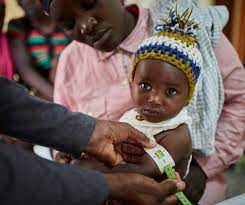(415) 300-0180

In rural Tanzania, Agnes endures a four-hour journey to collect her daughter’s school fee payment from the nearest money transfer agent. She pays a steep 15% transaction fee, loses a full day of work at her shop, and returns home with less than she left with. For Agnes, and millions like her across rural Africa, the lack of accessible financial services isn’t just an inconvenience—it’s a daily, costly burden.
For the unbanked, everyday financial activities come with high costs. Fees on basic transactions can run up to 15-25%, while informal lenders charge interest rates of 30-40% or more. Storing cash also poses risks, with up to 20% lost through theft, mismanagement, or other hazards. Then there’s the cost of time: many spend entire days traveling to distant banks or money transfer agents, which often means sacrificing a day’s earnings.
The indirect costs are even greater. Without reliable financial services, people miss out on business opportunities, have limited ways to save, lack access to credit, and are vulnerable to economic shocks. These hidden costs create a cycle of financial exclusion that prevents people from growing their businesses, securing their families’ futures, or even saving for emergencies.
Imagine a rural market vendor earning about $200 per month. Between transaction fees, travel expenses, and lost work hours, they might lose up to $90 each month—a staggering 45% of their income. For those needing emergency funds, informal loans come with interest rates that push people deeper into debt. A small $100 loan might cost $30 in interest after just one month, creating an effective annual percentage rate (APR) of 360-480%. This cycle drains resources and reinforces poverty, leaving little room for growth or stability.
Without access to banking, people face serious barriers that extend into every part of their lives. Business owners struggle with cash flow, find it hard to maintain inventory, and operate under the constant threat of theft. Personal financial planning is next to impossible, as there’s little access to safe credit, savings tools, or insurance, and no way to plan for retirement. The result is a fragile financial ecosystem that keeps people locked in day-to-day survival.
Mary, a small shop owner in rural Kenya, makes $300 per month but loses about $120 in transport, transaction fees, and the occasional theft. Without a local banking option, she has no safe way to manage her revenue. In Uganda, Ibrahim needed a $500 loan to buy farm supplies but couldn’t find an affordable option. Local lenders charged up to 200% interest, locking him out of the planting season and missing out on essential income.
For women in rural Africa, the financial barriers are even higher. Limited property rights, cultural restrictions, and lower literacy rates reduce access to accounts and credit. Women are 28% less likely to have an account, often paying 32% more in transaction fees and facing 45% less access to credit, which stifles both personal and business growth.
Mobile money has provided a lifeline to people like Agnes and Mary, making instant transfers possible with minimal fees. With mobile banking, there’s no need to travel long distances, and transactions are secure and accessible around the clock. The ability to save, pay bills, and transfer funds through mobile devices is helping break the cycle of financial exclusion.
Immediate solutions are emerging, including digital wallets that allow for safe savings, direct payments, and mobile-based transactions. Community-led savings groups and peer support systems are helping people build credit and access funds when they need them.
Long-term strategies involve infrastructure development, such as mobile networks, internet access, and digital literacy programs. Policy changes can support financial inclusion by simplifying account creation, expanding mobile banking, and implementing consumer protections that ensure security for rural users.
Real progress in financial inclusion comes from a multi-step approach:
Financial inclusion is about more than just numbers—it’s about providing security, supporting business growth, and enabling economic mobility. By addressing these hidden costs through education, technology, and inclusive policies, we can create pathways that lift individuals and communities out of the cycle of financial exclusion.
Ready to make a difference? Join the movement for financial inclusion in rural Africa and help break the cycle of financial exclusion.

Christopher Robison is a San Francisco-based software engineer and tech innovator with 25+ years in the industry. Specializing in blockchain, AI, and robotics, he’s built custom 3D printers, led tech transformations, and created impactful digital solutions for biotech, finance, and beyond. Outside of work, he’s a punk rock karaoke regular, golf enthusiast, and a tinkerer who’s always building something new alongside his cat Otis and dog Yuki.